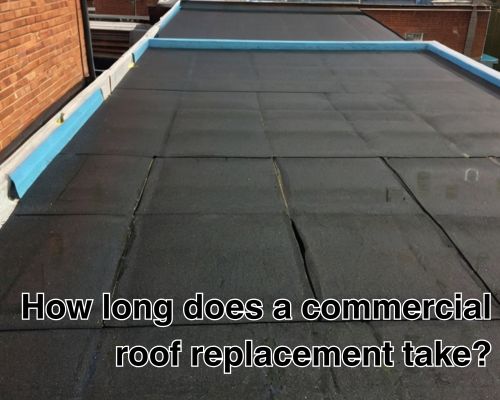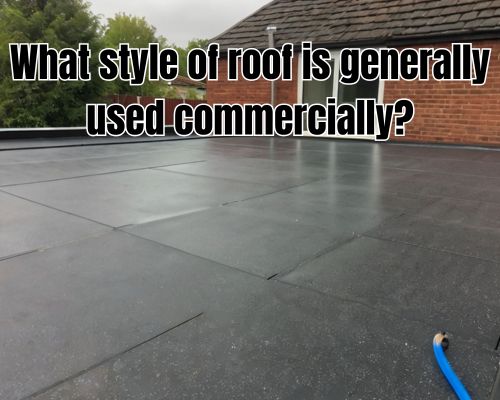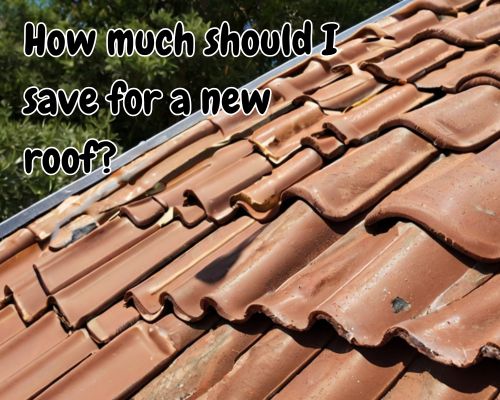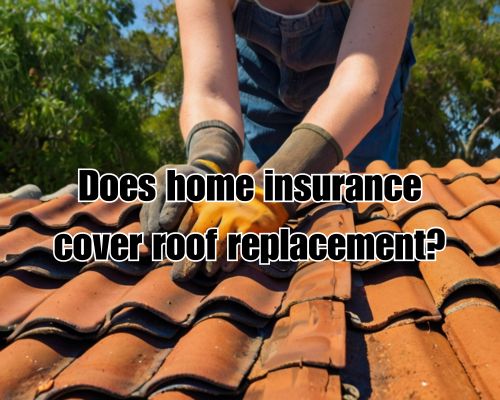
How Long Does a Commercial Roof Replacement Take? How Long Does a Commercial Roof Replacement Take?
If you’re a property owner or facility manager in New Jersey, chances are your commercial building’s roof is something you only think about when something goes wrong. But when repairs won’t cut it and a full commercial roof replacement becomes necessary, one of the most common—and pressing—questions is:
How long does a commercial roof replacement take?

The short answer? It depends. The long answer? With Charles Jimerson of CJ Commercial Roofing NJ, let’s break it down with detailed insights tailored to New Jersey’s unique climate, construction standards, and regulatory environment.
🏗️ Key Factors That Influence Roof Replacement Timelines
1. Roof Size & Complexity
In general, the larger and more complex the structure, the longer the project will take.
- Small businesses or retail storefronts (under 10,000 sq ft): 1–5 days
- Mid-sized warehouses or multifamily properties (10,000–50,000 sq ft): 5–10 business days
- Large commercial buildings (over 50,000 sq ft): 2–4 weeks or more
Complex designs (e.g., sloped roofing, HVAC units, skylights, solar panels) require added time for removal and reinstallation.
2. Roofing System Type
Different materials have different installation timelines:
| Roofing System | Time Estimate | Notes |
|---|---|---|
| TPO / PVC | 1–2 weeks | Lightweight, common in NJ |
| EPDM (rubber) | 3–10 days | Quick install but weather-sensitive |
| Modified Bitumen | 1–2 weeks | Often used on flat roofs |
| Built-Up Roofing (BUR) | 2–4 weeks | More layers = more time |
| Metal roofing | 1–3 weeks | Durable but longer to install |
New Jersey’s weather extremes—hot summers, snow loads—often make TPO and modified bitumen popular choices due to their insulation and energy-efficiency benefits.
3. Permitting and Local Building Codes (New Jersey-Specific)
The State of New Jersey mandates strict building codes under the New Jersey Uniform Construction Code (UCC). Permits can take anywhere from 3 days to 2 weeks, depending on the municipality (e.g., Newark vs. Cherry Hill).
Common inspections include:
- Pre-inspection of the existing roof
- Mid-project inspections (especially for fire-retardant layers)
- Final inspection upon completion
Permitting and compliance can sometimes delay project starts—especially in counties like Essex, Bergen, and Hudson, where commercial zoning scrutiny is higher.
4. Weather Conditions
Let’s face it—New Jersey weather is no joke. Windy springs, wet falls, and unpredictable snow in winter can impact project timelines.
Most roofers in NJ aim to schedule replacements between April and October, the optimal roofing season. Any project started in colder months may face delays due to material curing issues or unsafe working conditions.
👷♂️ Step-by-Step Timeline of a Commercial Roof Replacement
1. Initial Inspection & Proposal (1–5 Days)
A licensed commercial roofer in New Jersey (e.g., based in Trenton, Edison, or Atlantic City) will inspect your current roofing system, look for signs of water damage, mold, or substrate rot, and propose materials and pricing.
2. Permit Application & Procurement (3–14 Days)
After proposal acceptance:
- Contractor applies for building permits
- Orders materials (some suppliers near Jersey City or Paterson may experience lead times for specialty items)
3. Roof Tear-Off & Surface Prep (2–5 Days)
- Removal of old roofing layers
- Inspection of the decking and substrate
- Repairs to damaged insulation or wood layers
4. Installation of New System (3–10+ Days)
This includes:
- Vapor barriers
- Insulation
- Membrane or roofing material (TPO, EPDM, BUR, etc.)
- Flashing, sealants, and final surfacing
5. Final Inspection & Sign-Off (1–2 Days)
Local inspectors perform a final compliance check, after which you receive a certificate of completion or equivalent.
🧾 Local Considerations for New Jersey Property Owners
❄️ Insulation Requirements
Under NJ state energy codes, insulation R-values must meet minimum standards—especially critical in North Jersey cities like Hackensack or West Orange where winter heat loss is a concern.
🧯 Fire-Resistance Ratings
Commercial roofing materials must often comply with Class A fire resistance, especially near urban centers like Newark and Jersey City.
🧑🔧 Union Labor & Contractor Licensing
Roofers in NJ are typically licensed via the Division of Consumer Affairs. Hiring unionized or certified contractors ensures timelines are followed and guarantees insurance coverage compliance.
Look for roofers affiliated with the North East Roofing Contractors Association (NERCA) or NRCA for credible service.
🧩 Tips to Minimize Replacement Time
- Pre-order materials during contractor selection
- Plan around seasons—schedule work during spring or early fall
- Ensure permit paperwork is complete
- Vet contractors for experience on similar commercial buildings
- Communicate clearly about building access, business hours, and tenant notifications
📉 Hidden Delays to Watch Out For
- Decking surprises (water damage under the old system)
- Weather halts (snow, high wind advisories in central NJ)
- Subcontractor bottlenecks (e.g., HVAC disconnection)
- Permit office backlogs in busier counties (Middlesex, Union)
🧾 Final Thoughts: Timing is Money in NJ
So, how long does a commercial roof replacement take in New Jersey? On average, 5 to 14 business days, not counting weather or permit delays. Add another week or two for inspections and procurement.
Whether you’re managing a strip mall in Princeton, a logistics warehouse in Secaucus, or a medical building in Camden, the right roofing contractor like CJ Commercial Roofing NJ will help you minimize disruptions, meet code, and optimize installation speed.
By proactively planning and understanding all influencing factors—from material choice to New Jersey-specific regulations—you can better estimate project timelines and avoid costly surprises.
🔍 Need Help with Your Roofing Timeline?
If you’re searching for commercial roofing services in New Jersey, ensure your contractor:
- Specializes in your roof type
- Understands NJ permit processes
- Offers realistic timelines in their proposal
Don’t leave your project to chance—timeline accuracy is critical to protecting tenants, assets, and business continuity.



